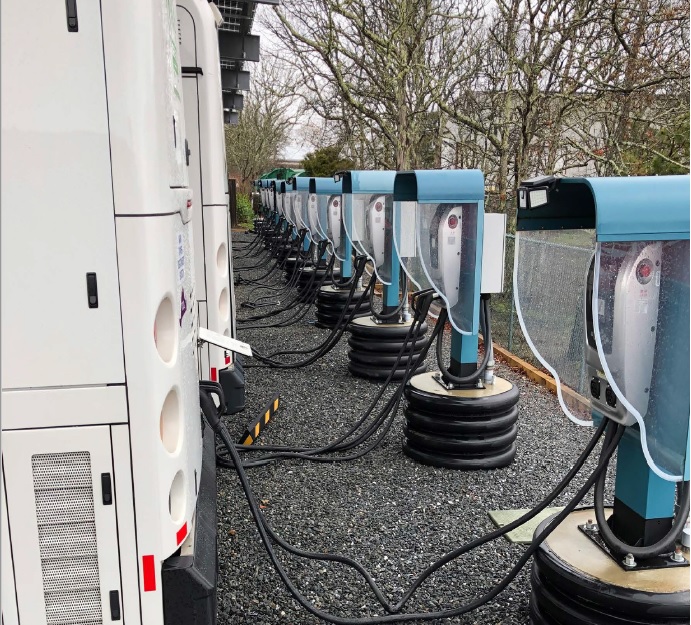The Martha’s Vineyard Transit Authority (VTA) had a vision of transitioning its fleet of buses to all electric. To assist with that transition, it partnered with the Vermont Energy Investment Corporation (VEIC), a Vermont-based non-profit organization that helps companies and organizations become more energy efficient and less dependent on fossil fuels. As an island, Martha’s Vineyard (MV) gets its fossil fuels from the mainland, so by going electric, with buses charged by solar, the VTA is creating a more sustainable transportation system for the island.
The VTA purchased its first electric buses in 2018 to serve the nearly 1.3 million residents and tourists that use the MV transit system each year. A solar canopy at the charging station became operational in 2021, and the fleet has more than doubled. The next step to ensure reliability was to turn the charging station into a microgrid that could island when the grid goes down, and battery storage was added.

To manage the microgrid, the VTA turned to PXiSE Energy Solutions (pronounced ‘Pice’) for a microgrid controller to automate the integration of multiple distributed energy generation resources, including a 466kW solar array, a battery storage system and 16 bus charging stations. The microgrid controllers enable the charging centers to stay up and running for several hours in the event of a power outage, and they also they provide real-time forecasting that provides additional functions such as real-time asset control and tight ramp-rate control. The microgrid controllers ensure connectivity to virtually any device on the grid, according to PXiSE, and they aggregate power from the solar and battery systems, creating a single virtual power plant that can operate off grid.
PXiSE Energy Solutions recently announced that Rove Charging, a California-based company that designs and builds EV charging centers, will use its microgrid controller with battery storage and onsite solar. Rove’s EV charging centers are designed to host more than 40 direct current fast chargers (DCFC), an onsite market, car wash, 24/7 lounge, dog walk and restroom facilities. For Rove’s centers, the PXiSE software solution will manage the point of interconnection with the utility to a net-zero export, while also managing the facility’s generation capability
“This advanced controller will allow us to better leverage renewable energy from the California grid and Rove’s onsite solar to provide more affordable, sustainable, and reliable charging to Rove customers,” said Nathan McDonnell, chief executive officer of Rove.
This content is protected by copyright and may not be reused. If you want to cooperate with us and would like to reuse some of our content, please contact: editors@pv-magazine.com.









By submitting this form you agree to pv magazine using your data for the purposes of publishing your comment.
Your personal data will only be disclosed or otherwise transmitted to third parties for the purposes of spam filtering or if this is necessary for technical maintenance of the website. Any other transfer to third parties will not take place unless this is justified on the basis of applicable data protection regulations or if pv magazine is legally obliged to do so.
You may revoke this consent at any time with effect for the future, in which case your personal data will be deleted immediately. Otherwise, your data will be deleted if pv magazine has processed your request or the purpose of data storage is fulfilled.
Further information on data privacy can be found in our Data Protection Policy.